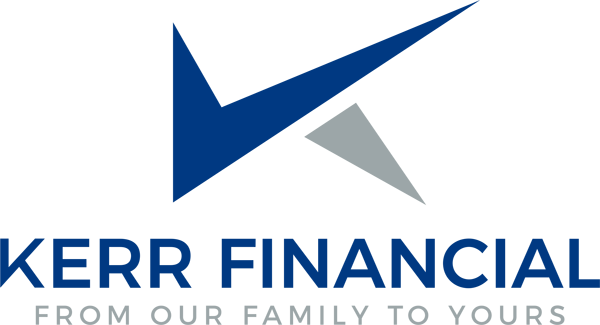Canada is entering the largest transfer of generational wealth in its history. By 2026, more than CAD $1 trillion in personal wealth is expected to pass from older to younger generations, an intergenerational shift driven in large part by real estate growth and investment holdings¹. In Toronto, the stakes are clear. Even with recent declines in housing prices, the average home still sells for well over CAD $1 million, underscoring that many families hold equity in the high seven-figure range. Yet many families are at risk, often due to inadequate financial literacy and a lack of planning.
For many families, generational wealth transfer is not a single event. It is a process that unfolds over decades. When done well, it brings together effective legal structures, tax efficiency, family readiness, and shared values. When neglected, it can lead to conflict, loss of capital, and strained relationships.
This article focuses on a part of the process that is often overlooked: continuity planning, the ability to keep wealth, purpose, and family connection intact from one generation to the next.
Why Continuity Planning Matters in Generational Wealth Transfer
The most successful wealth transfers happen when families see the process as ongoing, not as a one-time transaction. Plans are revisited regularly, the next generation is engaged early, and adjustments are made as life changes.
Example of Best-In-Class Continuity Planning
One Canadian family business owner began formal succession planning in her early 50s. She started by freezing her company shares to lock in value for tax purposes, then brought her adult children, who were interested in the business, onto the company’s advisory board to build their knowledge in a structured way. She also created a family charitable foundation to give those less involved in the business a way to contribute meaningfully and develop leadership skills in a different setting.
Over the next ten years, she assessed each child’s capabilities, interests, and long-term goals, and made a point of listening to what each wanted for their own future. Those with the skills and interest to lead the business took on greater operational and strategic roles. Others participated through the foundation, oversight of family investments, or governance activities that supported the enterprise without day-to-day involvement. She gradually transitioned control, introduced the next generation to external advisors, and updated her estate plan to reflect changes in tax rules. By tailoring roles to strengths and respecting individual aspirations, she created stability, kept communication open, and gave each of her children the authority and confidence to lead where they could add the most value.
Four Building Blocks for Successful Generational Wealth Transfer
1. Create a long-term vision, not just a document
Before updating a will or setting up a trust, decide what you want your wealth to represent. Is it about financial security, building businesses, supporting charitable causes, or something else? A clear vision will guide decisions over decades, not just at the time of transfer.
Tip: A one-page family vision statement can be reviewed and updated every two years.
2. Establish a governance rhythm
Continuity planning depends on regular opportunities for family members to connect, learn, and make decisions together.
Examples:
- Hold an annual family meeting to review overall goals, progress, and upcoming decisions.
- Schedule quarterly meetings for those involved in a family business or foundation.
- Create a next-generation council to give younger members a voice and hands-on experience.
These regular touchpoints build familiarity with decision-making, reduce surprises, and keep everyone aligned.
3. Integrate readiness into every stage
Legal and financial tools such as wills, trusts, corporate structures, and insurance are essential. They are most effective when the people who will use them are prepared.
Ways to build readiness:
- Allow younger members to manage a small investment pool or charitable fund.
- Invite them to selected meetings with your advisors, even if they do not yet see full financial details.
- Rotate meeting roles so that one year they take notes and another year they lead a discussion.
(For a detailed list of legal and financial tools, see our Estate Planning 101 guide.)
4. Adapt to life and law changes
Continuity planning means adjusting as circumstances shift:
- Life events: marriages, divorces, births, and deaths.
- Business changes: sale, expansion, or changes in leadership.
- Law changes: such as updates to federal or provincial tax rules, new trust reporting requirements, amendments to estate laws in your province, or changes to corporate statutes that affect shareholder rights or succession provisions in private companies. For families with cross-border holdings or residences, changes to foreign inheritance or tax laws can also be significant.
A set annual review makes it easier to respond to these changes before they create problems.
Common Generational Wealth Transfer Pitfalls
Even families with good intentions can run into problems, such as:
- Treating the plan as complete once the documents are signed.
- Avoiding important conversations until it is too late.
- Assuming heirs will be ready without structured preparation.
- Letting legal tools sit unused because successors do not understand them.
The Payoff of a Continuity Mindset
When families approach generational wealth transfer as an ongoing cycle:
- Successors are prepared rather than surprised.
- Values are carried forward along with capital.
- Legal and financial structures remain relevant as circumstances change.
- Communication becomes a normal part of family life, reducing conflict.
Final Thoughts on Continuity Planning for Generational Wealth Transfer
Generational wealth transfer is not a date on the calendar. It is a process you can begin today. Build a vision, create a governance rhythm, prepare your successors, and review your plan regularly. Over time, this approach can help protect your assets and strengthen family unity.
At Kerr Financial, we help families turn inheritance into impact. Whether you are beginning to think about continuity or refining an existing plan, our team can guide you at every stage.
Next Steps: Download Our Generational Wealth Transfer Checklist
If you would like a practical tool to begin your continuity planning, enter your email address below, and we will send you our Generational Wealth Transfer Checklist, tailored for Canadian families.
- CPA Canada (2023), “Intergenerational Wealth Transfer in Canada”; Kelowna Real Estate Blog (2025), “The $1 Trillion Wave: How Intergenerational Wealth Transfer is Reshaping Canadian Real Estate”; Richardson Wealth (2025), “Financial Literacy 2025: Building Generational Wealth.”
Related Articles
Investment Management, Kerr Family Office, Kerr Fundamentals, Kerr Integrated






